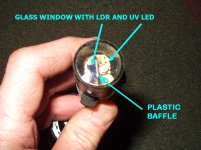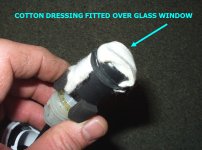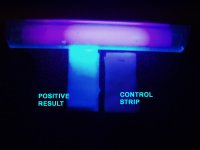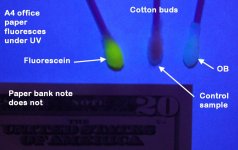If the sink to (putative) resurgence distance is not too far, then it should be easy enough to get somebody stationed at the supposed resurgence in plenty of time to see the results of the test. But – be careful of how much fluorescein you use.
I once did a flood-pulse / dye test of Short Gill Cave in Barbondale, and sure enough the flood pulse came through to the resurgence very quickly (pretty well instantaneously in human terms) while the dye took an hour or two to come through, thus indicating that it spent some time traversing a sump . . . but when it did, it coloured Barbon Beck all the way down to Barbon village, at which point we decided to call it a day and absquatulated.
Similarly I once tested Robin's Dub Cave to its resurgence on the other side of Deepdale Beck – it thus having gone under the beck. Deepdale Beck joins the Dee in Dentdale, and again the Dee was green all the way down to the village.
It seems that somehow the dye spreads out, rather than travelling as a sort of bolus down the river – an effect accentuated by diffusing slowly through a phreatic zone.







